Its a general question, How big should a leopard gecko tank be ? Generally, a tank that’s around 10 to 20 gallons in size should suffice for a single leopard gecko care. This allows them ample room to move, explore, and feel comfortable.
It’s crucial to prioritize horizontal space over height, as leopard geckos are terrestrial creatures. A properly sized tank helps create a stress-free environment, flourish their health and overall happiness.
How big should be a leopard gecko tank? Providing a spacious habitat is key for their well-being. Typically, a 10 to 20-gallon tank works well for a single gecko, prioritizing floor space over height. This setup encourages their natural behaviors and ensures a comfortable and thriving environment.

- Brief Overview Of How Big Should A Leopard Gecko Tank Be: Size Of The Tank
- Importance Of Providing The Right Tank Size For Leopard Geckos: Leopard Gecko Tank Size
- The Minimum Tank Size Requirements For A Single Leopard Gecko: Size Matters For One Leopard Gecko
- Benefits Of Providing A Larger Tank For Leopard Geckos: Larger Size Gallon For Leopard Gecko Tank Setup
- How To Calculate The Ideal Tank Size Based On The Number Of Geckos: Size Tank Is Recommended
- Factors To Consider When Choosing A Tank Size For Leopard Geckos
- Number Of Geckos And Their Behavior In Relation To Tank Size
- Providing Ample Space For Exercise And Exploration
- Creating A Comfortable And Stress-Free Environment For Geckos
- Tips For Setting Up The Tank To Meet The Needs Of Leopard Geckos
- Monitoring Temperature And Humidity Levels In The Tank
- Cleaning And Maintaining The Tank To Keep It In Optimal Condition
- FAQ About How Big Should A Leopard Gecko Tank Be
- Final Thought
Brief Overview Of How Big Should A Leopard Gecko Tank Be: Size Of The Tank
In considering the size of a leopard gecko tank, a concise overview is valuable. Aim for a tank of around 10 to 20 gallons for one gecko, focusing on horizontal space rather than height. This accommodates their terrestrial nature and facilitates movement.
An appropriately sized tank supports their overall wellness, encouraging active behavior and reducing stress.
Leopard Gecko Tank Size CM
What’s the ideal leopard gecko tank size in centimeters? To ensure their contentment, consider providing about 30 cm in length and 20 cm in width per gecko.
This space allows them to roam and feel secure. A well-proportioned tank size supports their natural behaviors and enhances a thriving leopard gecko habitat.
Leopard Gecko Tank Size In Inches
For their comfort, aim for about 12 inches in length and 8 inches in width per gecko. This provides room for movement and a cozy environment, aiding their overall well-being and happiness.
Importance Of Providing The Right Tank Size For Leopard Geckos: Leopard Gecko Tank Size
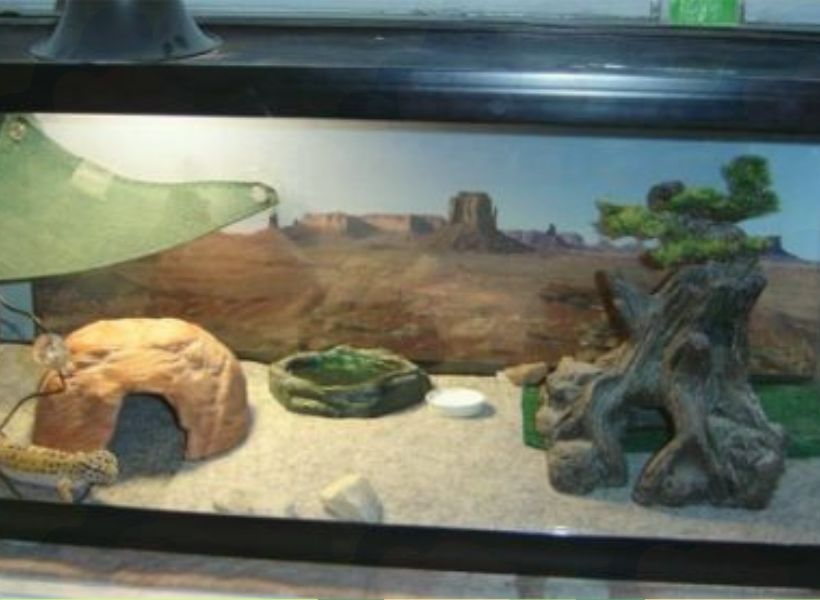
Ensuring the correct cage size for leopard geckos holds great importance. A suitable habitat, around 10 to 20 gallons for one gecko, allows them to exhibit natural behaviors comfortably.
Prioritizing floor space over height, about 30 cm by 20 cm, provides an optimal environment. This encourages activity, reduces stress, and supports their well-being.
A well-proportioned tank size is a key factor in fostering a happy and thriving leopard gecko.
Ideal Tank Dimensions For Leopard Gecko
The perfect tank dimensions for a leopard gecko are typically around 30 cm in length and 20 cm in width.
This size offers ample space for them to move around comfortably and create a cozy home that fosters their natural behaviors.
The Minimum Tank Size Requirements For A Single Leopard Gecko: Size Matters For One Leopard Gecko
To meet the needs of a single leopard gecko, adhering to the minimum tank size requirements is very important in order to meet their demand.
A space of 10 to 20 gallons is typically recommended, granting them ample room to move about comfortably. By providing this appropriately sized habitat for your gecko, you’re fostering an environment that supports their natural behaviors.

Benefits Of Providing A Larger Tank For Leopard Geckos: Larger Size Gallon For Leopard Gecko Tank Setup
Offering a more spacious tank for leopard geckos comes with several advantages. A larger habitat, ideally 20 gallons or more, permits increased movement and exploration.
This promotes physical activity, mental stimulation, and natural behaviors, contributing to their wellness. A roomier environment accommodates hiding spots, temperature gradients, and enriching elements, ensuring a happier and healthier leopard gecko.
Proper Habitat Size For Leopard Gecko
Ensuring the proper habitat size for a leopard gecko is vital. Aim for a tank of around 10 to 20 gallons, providing ample space for movement.
This size supports their comfort, encourages natural behaviors, and contributes to their overall health.
How To Calculate The Ideal Tank Size Based On The Number Of Geckos: Size Tank Is Recommended
Calculating the ideal tank size for your geckos is simple and straight. For each leopard gecko, allocate around 10 to 20 gallons of space. So, if you have two geckos, aim for a 20 to 40-gallon tank.
This ensures enough room for their comfort and activity. Prioritize horizontal space over height, and maintain a cozy environment with proper hiding spots.
Following this simple guideline helps create a habitat where your geckos can live happily.

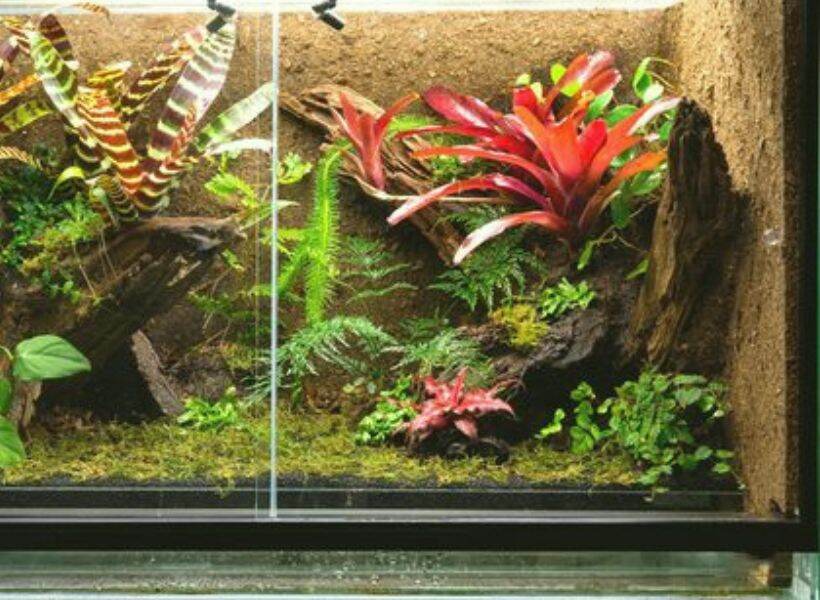
Factors To Consider When Choosing A Tank Size For Leopard Geckos
When deciding on the right tank size for your leopard geckos, consider a few key factors.
Their natural behavior and movement patterns suggest around 10 to 20 gallons per gecko. Focus on floor space more than height, allowing them to explore comfortably.
Also, think about potential future additions to the habitat and the ease of maintaining proper temperature and humidity levels.

Number Of Geckos And Their Behavior In Relation To Tank Size
The number of geckos you have and their behavior are closely linked to the tank size you should provide. For each gecko, a tank of around 10 to 20 gallons is recommended. A single adult leopard geckos be housed snugly in a 20 to 30 gallons tank.
This size permits them to move, explore, and exhibit natural behaviors comfortably. Consider the interactions between geckos too; more geckos might require more space to avoid stress.
Providing Ample Space For Exercise And Exploration
A habitat with enough room allows your leopard gecko to move around, climb, and explore, which are vital for their physical and mental health.
Providing hiding spots, branches, and objects to interact with can enrich their environment further. This promotes active behavior, reduces stress, and contributes to a healthier and happier gecko.
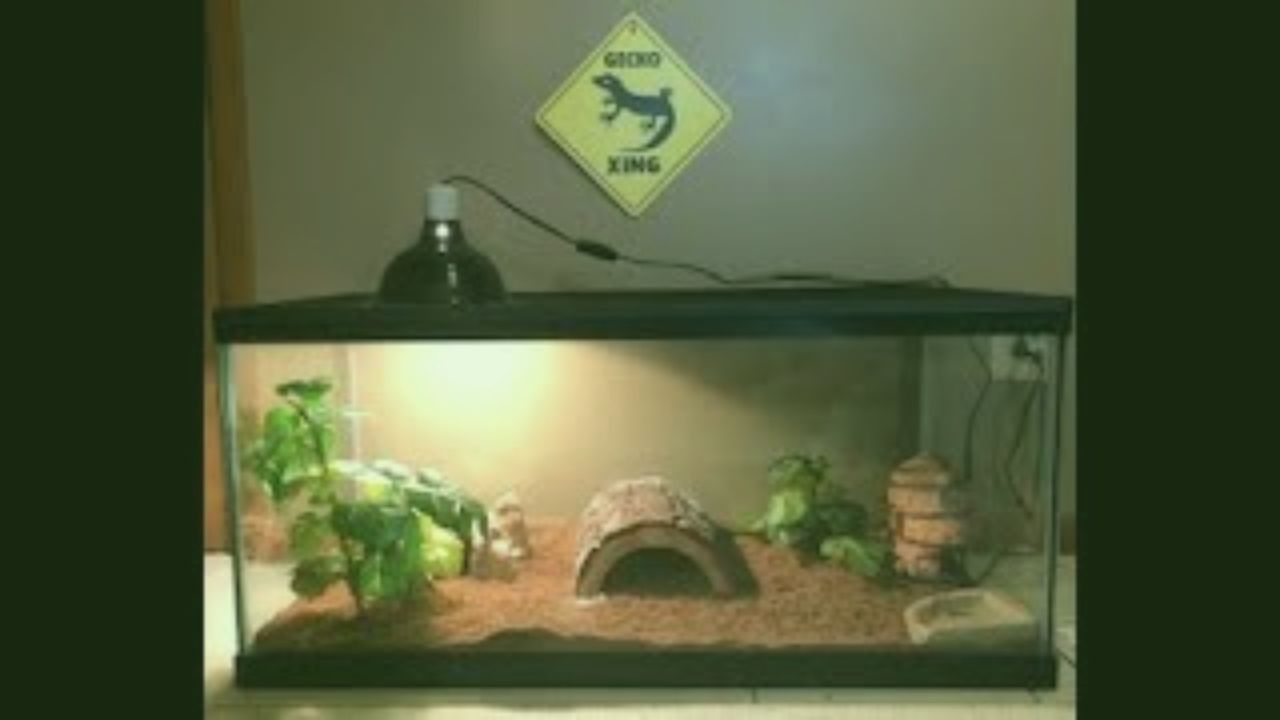
Creating A Comfortable And Stress-Free Environment For Geckos
Crafting a comfortable, stress-free environment is crucial for geckos’ wellness. Adequate hiding spots, proper temperature gradients, and suitable tank size are essential.
Avoid overcrowding, as it can lead to stress and conflicts. Maintain consistent lighting and feeding schedules to establish a routine.
All these factors together ensure a harmonious habitat, reducing stress, and providing happiness for your geckos.
Tips For Setting Up The Tank To Meet The Needs Of Leopard Geckos
When setting up a tank for leopard geckos, a few tips can make a big difference. Choose a tank size of about 10 to 20 gallons per gecko, allowing them to move freely.
Include hiding spots and climbing elements to mimic their natural habitat. Maintain the right temperature and humidity levels, and use a substrate suitable for burrowing.
These steps ensure a comfortable and stimulating environment, fulfilling the needs of your leopard geckos.
Adding Appropriate Hiding Spots And Climbing Opportunities In The Tank
Incorporating suitable hiding spots and climbing opportunities in the tank is the key factor. Provide shelters like small caves or hollow logs for security and a sense of safety. Adding branches or platforms for climbing replicates their natural behavior.
These elements create a diverse and engaging environment that allows leopard geckos to express their instincts, ultimately promoting their physical and mental wellness within the enclosure.
Monitoring Temperature And Humidity Levels In The Tank
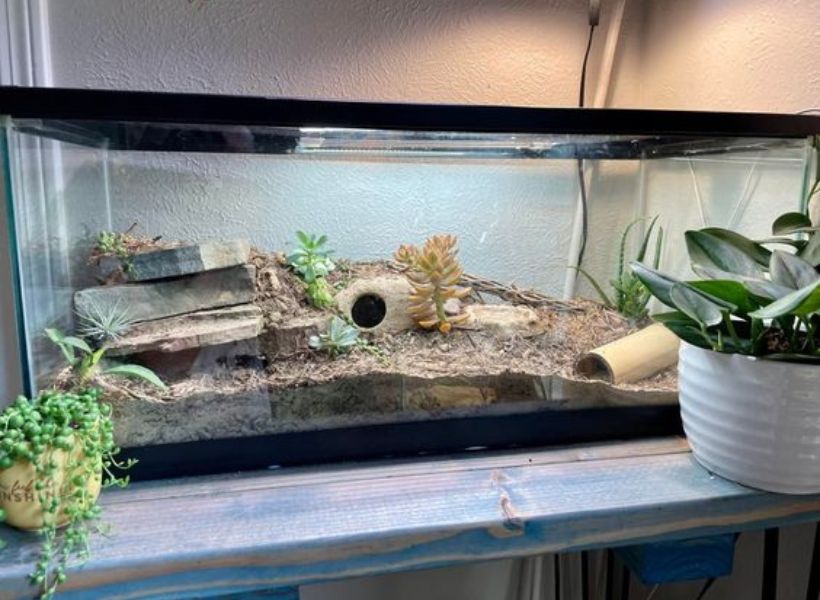
Leopard geckos thrive in specific conditions. Maintain a temperature range of 88-92°F (31-33°C) during the day and a slight drop at night. Humidity should be around 20-40%.
Use reliable thermometers and hygrometers to ensure accuracy. Proper temperature and humidity create a comfortable and healthy habitat, supporting the vitality of your morphs.

Cleaning And Maintaining The Tank To Keep It In Optimal Condition
Regular cleaning and maintenance of the tank are essential for optimal conditions. Remove uneaten food and waste promptly to prevent bacterial growth.
Clean and disinfect the tank surfaces regularly, but avoid using harsh chemicals. Replace the substrate every few months, and wash water and food dishes routinely.
A clean environment reduces the risk of infections and ensures a safe and comfortable space for your leopard geckos.
FAQ About How Big Should A Leopard Gecko Tank Be
Is A 10 Gallon Tank Big Enough For A Leopard Gecko?
While a 10-gallon tank might be suitable for a young leopard gecko, it could become restrictive as they grow. Opting for a slightly larger enclosure, such as a 20-gallon tank, offers more space for movement and exploration. Prioritizing their comfort and natural behaviors ensures a healthier and happier reptile in the long run.
Is A 50 Gallon Tank Too Big For A Leopard Gecko?
A 50-gallon tank is spacious for a leopard gecko and might not be necessary. While providing ample room for movement, it could make them feel uncomfortable due to excess space. A tank of around 20 to 30 gallons is generally recommended, striking the right balance between comfort and space for your gecko’s well-being.
Is A 15 Gallon Tank Big Enough For A Leopard Gecko?
A 15-gallon tank can be adequate for a single young leopard gecko. However, as they grow, you might consider transitioning to a larger enclosure, like a 20-gallon tank, to ensure they have enough room to explore and exhibit natural behaviors comfortably. Adapting their habitat as they develop is key to their well-being.
Do Leopard Geckos Need A Tall Or Long Tank?
Leopard geckos generally prefer a long tank over a tall one. They’re ground-dwellers and thrive in habitats that offer more horizontal space for moving and hunting. A longer tank, like a 20-gallon long, is better suited for their needs, allowing them to engage in their natural behaviors and feel more at home.
Final Thought
Creating the right habitat for your leopard geckos is pivotal for their health and happiness.
Adequate tank size, proper hiding spots, controlled temperature, and regular maintenance form the foundation of their wellness.
By understanding “How big should a leopard gecko tank be” their needs and providing a comfortable environment, you’re ensuring that your leopard geckos can lead fulfilling lives and showcase their natural behaviors, resulting in a rewarding and enriching experience for both you and your pets.


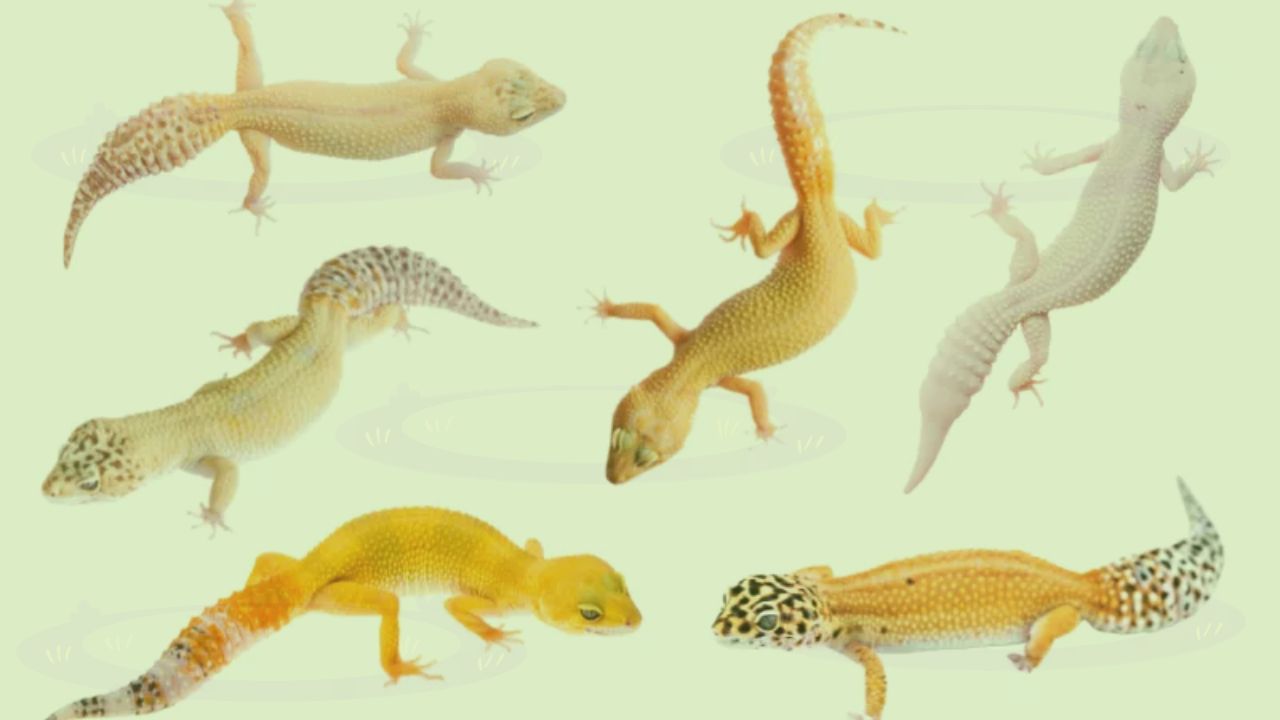

Leave a Reply